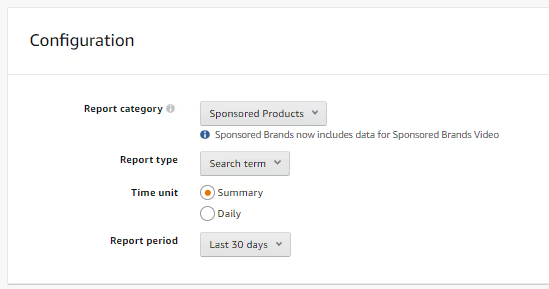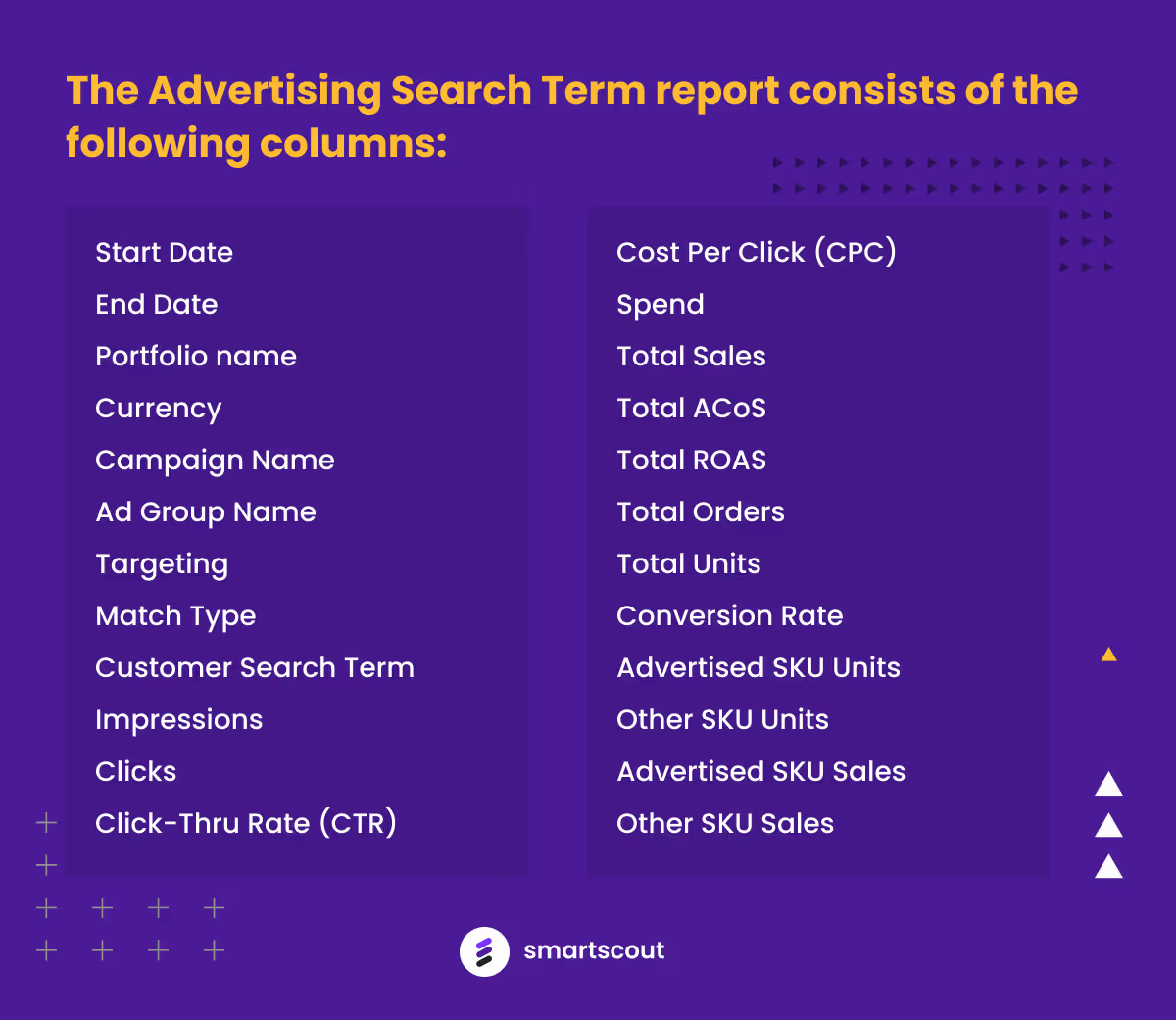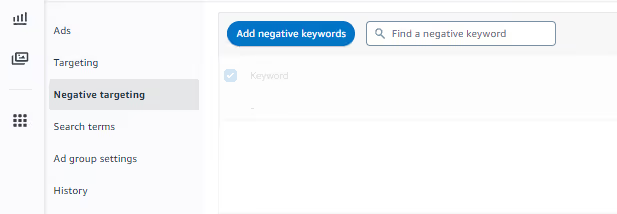Are you looking for an effective way to boost your sales on Amazon? Profitably? Unlocking the power of Amazon’s Search Term Report is your answer! Amazon’s Advertising Search Term Report is an incredibly powerful tool for sellers looking to make the most of their Amazon advertising campaigns.
It provides detailed insight into the exact search terms people use when searching for products, allowing you to tailor your campaigns, as well as your product listings and product detail pages, to target the most relevant and profitable terms. By understanding which terms are driving the most traffic and conversions, you can optimize your ad campaigns for maximum efficiency and cost-effectiveness.
With Amazon’s Advertising Search Term Report, you can easily identify both long-tail and popular search terms, enabling you to quickly and effectively target the most profitable keywords. This invaluable report can help you make the most of your advertising budget and increase your Amazon sales.
This guide will explain how to unlock the power of Amazon Search Term Reports, so you can start capitalizing on this powerful data and grow your business. With the right approach and understanding, you can use Search Term Reports to gain a competitive edge on the Amazon marketplace.
What Is Amazon’s Search Term Report?
The Search Term Report is a valuable resource that sellers can leverage to provide insights into how Amazon shoppers are searching for products. Accessed through Sponsored Ads Reports in the Advertising Console, it is available to download for both Sponsored Products and Sponsored Brand ads.
In a nutshell, the report is a detailed list of the keywords that have driven traffic to your product listings. It shows the total number of impressions for each search term, as well as the click through rate (CTR) each keyword has generated. The report also displays information about the average cost per click (CPC) of each keyword, how many people clicked on an ad, how many people purchased, and the revenue generated.
This information can be extremely valuable for anyone running an Amazon ad campaign, as it allows you to quickly and easily identify the most profitable search terms, as well as those that are most likely to drive conversions.
With a 65-day look back window, the Search Term Report details all the customer search terms that have driven clicks and impressions as a result of your advertising campaigns, as well as spend and revenue for each search term.
Benefits of Using the Search Term Report
You can use the Search Term Report to identify the most profitable and high-converting customer search terms (CSTs) or ASINs.
As discovery campaigns, CSTs generated from your auto campaigns as well as broad and phrase manual campaign match types can be used to optimize product titles, bullet points and product descriptions as well as being launched in advertising campaigns. This can help you improve your CTR for increased sales and drive more traffic to your product listing in order to make the most of your advertising budget.
Additionally, you can use the report to identify low-converting keywords and remove them from your ad campaigns, thereby saving money on ad spend.

How To Access the Search Term Report?
To gain access to the report you must be logged into your seller central account. Navigate to the Advertising tab and click on Campaign Manager. On the left-hand column, click on the Measurement and reporting tab, Sponsored Ads Reports and click create a report.
You will be presented with multiple options depending on what campaigns you are running. You have the option to select Sponsored Product or Sponsored Brand and then choose the report type "Search term" select a reporting period and hit the run report button.

Once the report has been processed, it will be available to download as an Excel file. It's important to note that as the Search Term Report only has a look back window of 65 days, you should create a plan to download them regularly or set recurring downloads.
Analyzing and Interpreting Search Term Reports
The Search Term Report can tell you a lot about your ad campaigns, including the keywords that have driven traffic to your product listings and how many clicks and sales each keyword has generated. It can also tell you the CPC of each keyword, as well as the conversion rate (CVR).
This information can provide insight into which keywords are mot likely to drive conversions, as well as how much they cost to advertise. The report can also show you which keywords are driving the most traffic, enabling you to quickly identify high-converting and low-cost keywords to add to your campaigns and product listing.

How To Use the Report To Optimize Your Ad Campaigns
Keywords are the building blocks of any PPC campaign. From this report, you can identify and optimize keywords and ASINs based on, keywords that converted into sales, keywords that didn’t convert, and irrelevant keywords.
Optimization Step 1 – Profitable Search Terms/ASINs
- identify profitable search terms and ASINs, based on ACOS, from auto, broad, and phrase campaigns
- Create a list of potential keywords/ASINs and launch, periodically, in new campaigns with a maximum of 5 keywords/ASINs per campaign
Introducing new keywords and product targets increases ad visibility. Driving more relevant and potentially profitable traffic to a product listing, improves overall conversion rate (CVR).
Optimization Step 2 – Non-Profitable Search Terms/ASINs
- Identify search terms/ASINs that are getting clicks but no sales or those with an ACOS above 100 percent
- Add as negative exact match type within the corresponding campaign in which they are performing poorly

“Weeding” out the non-profitable search terms and preventing them from being displayed, contributes to a reduced ACOS
Optimization Step 3 – Irrelevant Search Terms
- Identify customer search terms, with a high number of clicks or a high ad spend, but are not relevant
- Add as negative exact match type within the corresponding campaign
Irrelevant search terms hurt your campaigns and impact your organic rank as Amazon deems your product as low performing; however, negating these search terms will ensure your product appears in relevance searches as evident by an improved CTR.
Optimization Step 4 – Optimize SEO
- Observe consumer trends and behaviors by identifying relevant search terms
- Optimize product title, bullet points, products descriptions, as well as back-end keywords to increase product relevance

Tips for Successfully Using Amazon Search Term Reports
There are a few simple tips and best practices for successfully using Amazon Search Term Reports for optimization.
Tracking New Trends
Track new search terms that are emerging and trending. Incorporate these into your product listings and your advertising campaigns.
Focus on Long-Tail Keywords
Focus on long-tail keywords, as they are more specific and usually have higher CVRs than shorter keywords. Include these in bullet points and product descriptions as well as advertising campaigns.
Category Relevant Keywords
If the data includes search terms that are specific to your product category, make sure you include that information in your product title, bullet points and product description to help customers looking for a solution in your product category, to find your product.
Conclusion
The Amazon Advertising Search Term Report is an incredibly powerful tool that can help you make the most of your ad campaigns and be used to optimize your product listings. It can show you which keywords are driving the most traffic and conversions, as well as the cost per click of each keyword.
This information can be used to identify high-converting keywords that are likely to drive sales and add them to your ad campaigns, as well as remove low-converting keywords that are wasting money on ad spend. By using the Amazon Advertising Search Term Report, you can better manage your Amazon ad spending and improve your return on investment.











